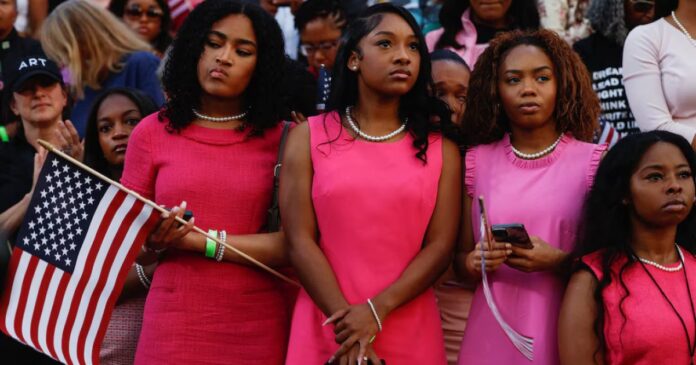The path for women to advance in American politics has been blocked once again. For the second time, a major political party's nominated female presidential candidate lost the election. The loss of Democratic candidate Kamala Harris to Republican Donald Trump on Tuesday highlighted the limitations of women's participation in US politics. On the other hand, it reminded of Hillary Clinton's defeat to Trump in 2016. British news agency Reuters reported this news.
There are several reasons behind Harris' defeat. According to Edison Research's exit poll data, economic conditions and concerns about people's financial security play a large role. But the study found, misogynistic attitudes towards women also had an effect. An October Reuters/Ipsos poll found that 55 percent of registered voters think gender inequality is a big problem in the United States. 15 percent of voters also said they would never feel comfortable voting for a female president.
Out of the 193 member states of the United Nations, only 13 countries currently have female heads of government. Although this number is gradually increasing since 1990. However, the disparity in women reaching leadership positions in the United States is stark. Women make up 51 percent of the U.S. population and 42 percent are ethnically diverse, but women still lag far behind in government representation and careers.
Kamala Harris' defeat makes the future path for women in US politics even more difficult. More political and social progress is emerging to remove the negative attitudes towards women and the barriers to their inclusion in positions of power.
Position of women in Congress and Governorship
Women make up 28 percent of all members of the 2022-24 US Congress, the highest in history. In addition, 25 percent of lawmakers identified themselves as black, Hispanic, Asian American, American Indian, Alaskan Native, or mixed race. Although several steps have been taken to improve the political status of American women, they are still largely absent from leadership positions.
In 1975, Ella Grasso was elected the first woman governor of the United States. Since then, 49 women have held the office of governor. But of these, only three women governors were elected, who were not white.
The door to the White House is still barred
Every US president ever elected has been male. However, in 2008, Barack Obama became the first black man to be elected president. If elected, Harris would have become the first woman and the first black woman president. Democrat Hillary Clinton was the first female presidential candidate nominated by a major party in 2016. He won the popular vote but was defeated in the Electoral College. Harris was the first female vice president. Who took office with President Joe Biden in 2021.
Pay discrimination
While some progress has been made towards eliminating gender inequality in the 20th century, progress in eliminating pay inequality has slowed in the 21st century. In 1982, women earned 65 cents for every dollar men earned. In 2002 it rose to 80 cents. In 2023, full-time working women were earning 84 cents to every dollar men were earning.
Discrimination in education system
According to the National Center for Education, since 1981, women have been earning bachelor's degrees at higher rates than men. In 2019, women constituted the majority of the highly educated labor force, and this trend has intensified since the Covid-19 pandemic.
Maternal mortality
The United States has the highest maternal mortality rate among developed nations, and 80 percent of these deaths are preventable. According to the Centers for Disease Control and Prevention (CDC), maternal mortality among black women is three times higher than that of white women. The CDC points to structural disparities in the health care system and the preconceived notions of medical providers.

